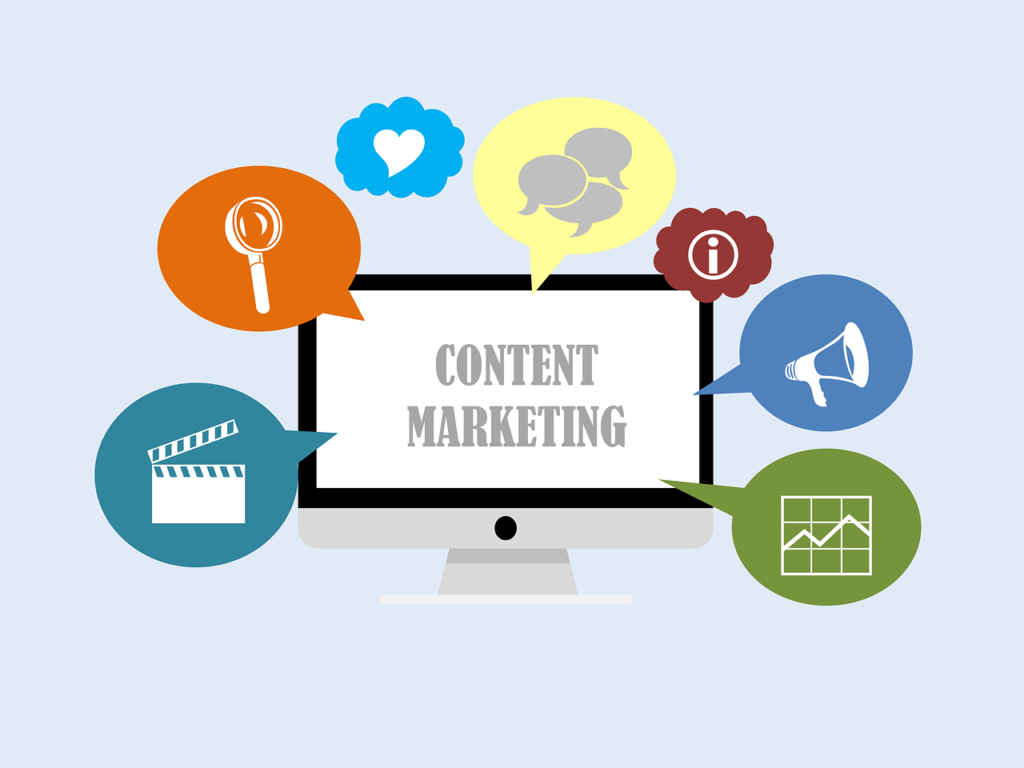Retail marketing is an ever-evolving field where staying ahead of the curve can significantly impact your bottom line. Whether you’re running a small boutique or a large chain store, effective marketing strategies can help drive sales, attract new customers, and retain existing ones. In this article, we’ll explore seven innovative retail marketing ideas that can transform your business and boost your sales.
Understanding the Retail Landscape
Before diving into specific marketing strategies, it’s essential to understand the current retail landscape. Today’s consumers are more informed and selective than ever before, thanks to the wealth of information available online.
They seek value, personalized experiences, and convenience. To meet these expectations, retailers need to be creative and strategic in their marketing efforts.
Creating an Unforgettable In-Store Experience
Enhance Visual Merchandising
Visual merchandising is a critical aspect of retail marketing. It’s not just about displaying products; it’s about creating an inviting and engaging atmosphere that draws customers in.
Use eye-catching displays, themed arrangements, and strategic lighting to highlight your products. Change your displays regularly to keep the store looking fresh and exciting.
Offer Interactive Experiences
Interactive experiences can make a visit to your store memorable. Consider incorporating technology like augmented reality (AR) to allow customers to visualize products in their own homes or on themselves.
Hosting in-store events, such as product demonstrations, workshops, or special guest appearances, can also create buzz and attract foot traffic.
Leveraging Digital Marketing
Build a Strong Online Presence
In today’s digital age, having a robust online presence is non-negotiable. Start with a well-designed, user-friendly website that reflects your brand’s identity.
Ensure your site is mobile-friendly, as many shoppers browse and make purchases from their smartphones. Optimize your website for search engines (SEO) to increase visibility and attract organic traffic.
Utilize Social Media
Social media platforms are powerful tools for retail marketing. They provide a direct line of communication with your customers and offer opportunities for engagement and promotion.
Identify the platforms where your target audience spends most of their time and create compelling content tailored to each platform. Use high-quality images, engaging videos, and interactive posts to capture attention and encourage interaction.
Utilize Retargeting Ads
Retargeting ads can help you reach potential customers who have already shown interest in your products but haven’t made a purchase yet. These ads can be displayed on social media platforms, search engines, and other websites that your target audience visits.
Retargeting ads serve as a reminder of the products they viewed and encourage them to return to your site and complete their purchase.
Invest in Video Marketing
Video marketing is an engaging way to showcase your products and tell your brand story. Create high-quality videos that demonstrate how your products work, highlight their features and benefits, and provide useful tips and tutorials.
Share these videos on your website, social media channels, and video platforms like YouTube and Vimeo.
Engage with Your Audience on Social Media
Social media platforms offer a unique opportunity to build relationships with your customers. Regularly post engaging content that encourages interaction, such as questions, polls, and user-generated content.
Respond promptly to comments, messages, and reviews to show that you value your customers’ feedback and engagement.
Consider using social media advertising to reach a broader audience. Platforms like Facebook, Instagram, and Pinterest offer advanced targeting options that allow you to reach users based on their interests, behaviors, and demographics.
Experiment with different ad formats, such as carousel ads, video ads, and story ads, to find what resonates best with your audience.
Embracing Omnichannel Retailing
Integrate Online and Offline Channels
Omnichannel retailing is about providing a seamless shopping experience across all channels, whether online or offline. Customers should be able to switch between your website, social media, and physical store without any friction.
Implementing features like click-and-collect, where customers can order online and pick up in-store, can enhance convenience and drive sales.
Personalize the Customer Journey
Personalization is key to standing out in a crowded market. Use data from your online and offline channels to understand your customers’ preferences and behaviors.
Tailor your marketing messages, product recommendations, and promotions to meet their individual needs. Personalized emails, loyalty programs, and targeted advertisements can significantly improve customer retention and sales.
Implementing Loyalty Programs
Reward Your Customers
Loyalty programs are an effective way to retain customers and encourage repeat purchases. Design a program that offers valuable rewards, such as discounts, exclusive offers, or early access to new products.
Make it easy for customers to join and participate. Track their purchases and engagement to provide personalized rewards and incentives.
Engage with Your Community
Building a sense of community around your brand can foster loyalty and word-of-mouth marketing. Create opportunities for your customers to connect with each other and your brand.
This could be through social media groups, in-store events, or online forums. Show appreciation for your loyal customers by highlighting their stories and feedback.
Utilizing Influencer Marketing
Collaborate with Influencers
Influencer marketing can amplify your reach and credibility. Identify influencers who align with your brand values and have a genuine connection with your target audience.
Collaborate with them to create authentic content that showcases your products. This could be through social media posts, blog reviews, or video features.
Monitor and Measure Results
Track the performance of your influencer campaigns to understand their impact. Use metrics like engagement rates, click-through rates, and sales conversions to assess the effectiveness.
Adjust your strategy based on the insights gained to optimize future campaigns.
Harnessing the Power of Email Marketing
Build and Segment Your Email List
Email marketing remains one of the most effective ways to communicate with your customers directly. Start by building a comprehensive email list. Collect email addresses through your website, in-store sign-ups, and during checkout.
Once you have a list, segment it based on customer preferences, purchase history, and demographics. Segmentation allows you to send targeted, relevant messages that resonate with different groups of customers.
Craft Compelling Email Campaigns
Your emails should offer value and encourage action. Design visually appealing emails with clear, concise content. Use attention-grabbing subject lines to increase open rates.
Personalize the emails by addressing the recipient by name and tailoring the content to their interests. Include strong calls-to-action (CTAs) that guide recipients towards making a purchase, visiting your store, or engaging with your brand in some way.
Enhance Emails with Interactive Elements
Adding interactive elements to your emails can increase engagement and make the email experience more enjoyable for your recipients. Consider incorporating elements such as interactive product carousels, quizzes, polls, and countdown timers.
These features encourage recipients to interact with the email content, increasing the likelihood of clicks and conversions.
Interactive elements also provide valuable data on customer preferences and behaviors, which can be used to further personalize future email campaigns. Ensure that these elements are mobile-friendly and work seamlessly across different email clients.
Implement Automated Email Workflows
Automated email workflows can streamline your marketing efforts and ensure timely communication with your audience. Set up automated sequences for various customer interactions, such as welcome series for new subscribers, post-purchase follow-ups, and re-engagement campaigns for inactive subscribers.
For example, a welcome series can introduce new subscribers to your brand, highlight popular products, and offer a special discount on their first purchase. Post-purchase follow-ups can include order confirmations, shipping updates, and requests for reviews or feedback.
Automated workflows save time and ensure consistent, personalized communication with your customers.
Creating Unique Promotions and Offers

Limited-Time Offers
Creating a sense of urgency can drive sales. Limited-time offers, flash sales, and exclusive deals can motivate customers to act quickly. Clearly communicate the time-sensitive nature of the promotion and highlight the value they will receive.
Ensure that these offers are genuinely beneficial to the customers to maintain trust and credibility.
Bundles and Discounts
Offer product bundles and discounts to increase the average transaction value. Bundling complementary products together at a discounted rate encourages customers to buy more.
Additionally, tiered discount systems, such as “buy one, get one 50% off,” can incentivize larger purchases. Make sure these promotions are well-promoted across your marketing channels to reach a wider audience.
Utilizing Data and Analytics
Track Customer Behavior
Understanding your customers’ behavior is crucial for effective marketing. Use data analytics tools to track how customers interact with your website, social media, and in-store.
Analyze this data to identify trends, preferences, and areas for improvement. This information can help you refine your marketing strategies and create more targeted campaigns.
Measure Marketing ROI
To ensure your marketing efforts are paying off, regularly measure the return on investment (ROI) for each campaign. Calculate the revenue generated from specific promotions and compare it to the cost of running them.
This analysis will help you determine which strategies are most effective and where to allocate your marketing budget for maximum impact.
Leveraging Local Marketing
Engage with the Local Community
Connecting with the local community can significantly boost your retail business. Participate in local events, sponsor community activities, or collaborate with other local businesses.
These efforts can increase your visibility and build a positive reputation within the community. Consider hosting or participating in local markets, fairs, or charity events to engage with potential customers.
Optimize for Local SEO
Ensure your business is easily found by local customers by optimizing for local search engine optimization (SEO). Create a Google My Business profile with accurate information about your store, including location, hours, and contact details.
Encourage satisfied customers to leave positive reviews, as these can improve your local search rankings. Additionally, use local keywords in your website content and online listings to attract nearby shoppers.
Embracing Seasonal Marketing
Tailor Your Marketing to Seasonal Trends
Seasonal marketing can drive significant sales, especially during holidays and special events. Plan your campaigns around major holidays, such as Christmas, Thanksgiving, and Black Friday, as well as local festivals and events.
Create themed promotions and marketing materials that align with the season. Offer special holiday products or bundles that cater to the festive spirit.
Refresh Your Store’s Look
Give your store a seasonal makeover to attract more customers. Decorate your storefront and interior to reflect the current season or upcoming holiday.
Seasonal window displays, festive decorations, and themed music can create a welcoming and engaging atmosphere. This not only attracts customers but also enhances their shopping experience, encouraging them to stay longer and spend more.
Engaging Customers Through Content Marketing
Develop a Content Strategy
Content marketing is a powerful tool to attract and engage customers. Start by developing a comprehensive content strategy that aligns with your brand’s goals and audience interests.
This strategy should include a mix of blog posts, videos, social media content, and more. Focus on creating content that provides value to your customers, such as how-to guides, industry insights, and entertaining stories related to your products.
Utilize User-Generated Content
Encourage your customers to create content for you. User-generated content (UGC) not only provides authentic insights into your products but also builds a sense of community around your brand.
Create campaigns that motivate customers to share their experiences with your products on social media. Feature the best submissions on your own channels, giving credit to the creators. This approach not only enriches your content pool but also fosters stronger connections with your customers.
Implementing Referral Programs
Create a Referral Incentive
Referral programs can turn your loyal customers into brand advocates. Design a referral program that rewards both the referrer and the referred customer. Offer incentives such as discounts, free products, or store credit for successful referrals.
Clearly explain how the program works and make it easy for customers to participate. Promote your referral program through your website, social media, and email marketing to reach a broader audience.
Track and Optimize
Regularly monitor the performance of your referral program. Track metrics such as the number of referrals made, conversion rates, and the lifetime value of referred customers.
Use this data to optimize your program and make necessary adjustments. Consider experimenting with different incentives and promotional tactics to find what works best for your audience.
Enhancing Customer Service
Train Your Staff
Exceptional customer service can differentiate your retail business from competitors. Invest in training your staff to provide excellent service. This includes teaching them about product knowledge, effective communication, and problem-solving skills.
Empower your employees to make decisions that enhance the customer experience, such as handling returns efficiently or offering personalized recommendations.
Implement Customer Feedback Systems
Listening to your customers is essential for continuous improvement. Implement systems to gather customer feedback, such as surveys, comment cards, or online reviews.
Analyze the feedback to identify areas for improvement and take actionable steps to address any issues. Show your customers that their opinions matter by responding to feedback and making visible changes based on their suggestions.
Utilizing Mobile Marketing
Optimize for Mobile Devices
With the increasing use of smartphones, mobile marketing has become crucial for retailers. Ensure that your website is mobile-friendly and offers a seamless browsing experience on all devices.
This includes fast loading times, easy navigation, and a responsive design. Consider developing a mobile app if it aligns with your business model, as it can enhance customer engagement and loyalty.
Leverage SMS Marketing
SMS marketing is a direct and effective way to reach your customers. Use SMS to send personalized promotions, reminders, and updates. Keep your messages short, relevant, and valuable to the recipient.
Obtain explicit consent from customers before sending SMS messages and provide an easy opt-out option to comply with regulations and maintain customer trust.
Incorporating Sustainable Practices

Promote Eco-Friendly Products
Sustainability is becoming increasingly important to consumers. Highlight your eco-friendly products and practices to attract environmentally conscious customers.
Use sustainable packaging, source products responsibly, and reduce waste in your operations. Communicate your commitment to sustainability through your marketing materials, website, and in-store displays.
Partner with Sustainable Brands
Collaborate with other brands that share your commitment to sustainability. Co-branded promotions, events, or products can enhance your brand’s credibility and appeal.
Partnering with sustainable brands can also open up new marketing opportunities and reach a broader audience. Promote these partnerships to demonstrate your dedication to sustainable business practices.
Maximizing In-Store Technology
Implement Point-of-Sale Systems
Modern point-of-sale (POS) systems can streamline your operations and improve the customer experience. Choose a POS system that integrates with your inventory management, customer relationship management (CRM), and e-commerce platforms.
This integration allows for real-time data tracking and better decision-making. Train your staff to use the system efficiently to ensure a smooth checkout process.
Use Digital Signage
Digital signage can enhance the shopping experience and drive sales. Use screens to display dynamic content such as promotions, product information, and customer testimonials.
Digital signage can also be used to guide customers through your store, highlight special offers, or provide entertainment. Regularly update the content to keep it fresh and relevant.
Building a Strong Brand Identity
Define Your Brand Values
Your brand identity sets you apart from competitors and builds a connection with your customers. Start by defining your brand values – the core principles that guide your business decisions and interactions.
Clearly articulate these values and ensure they are reflected in every aspect of your business, from your marketing materials to your customer service.
Create a Consistent Brand Image
Consistency is key to building a strong brand identity. Use consistent colors, fonts, and imagery across all marketing channels. Develop a brand voice that reflects your values and resonates with your target audience.
Whether you’re creating a social media post, an email, or an in-store display, maintaining a consistent brand image helps build recognition and trust.
Hosting Special Events
Plan In-Store Events
Special events can attract new customers and engage existing ones. Host events that align with your brand and appeal to your target audience. This could be a product launch, a holiday celebration, a fashion show, or a workshop.
Promote the event through all your marketing channels to generate excitement and ensure a good turnout. Provide attendees with a memorable experience to encourage repeat visits and word-of-mouth referrals.
Collaborate with Influencers and Local Celebrities
Collaborating with influencers and local celebrities can add star power to your events. Invite them to attend, host, or promote your events. Their presence can attract their followers and increase your event’s visibility.
Ensure that the influencers or celebrities you collaborate with align with your brand values and appeal to your target audience.
Utilizing Print Marketing
Design Eye-Catching Print Materials
Despite the rise of digital marketing, print materials can still be effective in retail marketing. Design eye-catching flyers, posters, and brochures that promote your products, events, and special offers.
Distribute these materials in-store, at local events, or through direct mail to reach a wider audience. Ensure that your print materials align with your overall brand image and convey a clear message.
Leverage Local Publications
Advertise in local newspapers, magazines, and community newsletters to reach potential customers in your area. Local publications often have a dedicated readership and can be an effective way to build brand awareness.
Consider writing articles or providing expert commentary related to your industry to establish yourself as a thought leader and attract more attention to your business.
Enhancing Your Online Store
Optimize the User Experience
Your online store is an extension of your physical store and should offer an equally satisfying shopping experience. Optimize your website for user experience by ensuring it is easy to navigate, visually appealing, and fast-loading.
Provide detailed product descriptions, high-quality images, and customer reviews to help customers make informed purchasing decisions.
Implement Abandoned Cart Recovery
Abandoned cart recovery can help you reclaim lost sales. Set up automated email campaigns to remind customers of the items left in their cart and encourage them to complete their purchase.
Offer incentives such as discounts or free shipping to motivate them to return and finalize their order. Personalize the emails and create a sense of urgency to increase conversion rates.
Investing in Staff Development

Continuous Training Programs
Your staff plays a crucial role in the customer experience. Invest in continuous training programs to keep them informed and motivated.
Provide training on product knowledge, customer service skills, and the latest retail technologies. Encourage your employees to share their ideas and feedback to improve your business operations and customer interactions.
Foster a Positive Work Environment
A positive work environment can boost employee morale and productivity. Create a supportive and inclusive workplace where employees feel valued and respected.
Recognize and reward their contributions, and provide opportunities for career growth and development. Happy employees are more likely to provide excellent customer service and contribute to your business’s success.
Exploring Partnership Opportunities
Collaborate with Complementary Businesses
Partnering with complementary businesses can open up new marketing opportunities and expand your reach. Identify businesses that share your target audience but offer different products or services.
Collaborate on joint promotions, events, or bundled offers to attract more customers. This can also lead to valuable networking opportunities and long-term partnerships.
Cross-Promote Products and Services
Cross-promotion is a cost-effective way to reach new customers. Partner with other local businesses to promote each other’s products and services.
This could involve displaying each other’s promotional materials in-store, mentioning each other on social media, or offering discounts to each other’s customers. Cross-promotion can help you tap into new customer bases and increase brand awareness.
Wrapping it up
Harnessing the power of email marketing is essential for retail businesses aiming to drive sales and build long-term customer relationships. By personalizing campaigns, crafting engaging subject lines, optimizing timing and frequency, implementing automated workflows, and enhancing emails with interactive elements, you can create highly effective and engaging marketing strategies.
Continuous monitoring and integration with other marketing channels ensure that your efforts remain impactful and relevant. By focusing on delivering value and nurturing relationships, retail startups can leverage email marketing to achieve sustained growth and success.
READ NEXT:
- Email Marketing Statistics Every Marketer Should Know in 2024
- Video Marketing Statistics: The 2024 Edition
- 2024 Content Marketing Statistics: Insights to Drive Your Strategy
- Affiliate Marketing in 2024: Essential Statistics and Trends
- Social Media Marketing by the Numbers: Key Statistics for 2024





















Comments are closed.